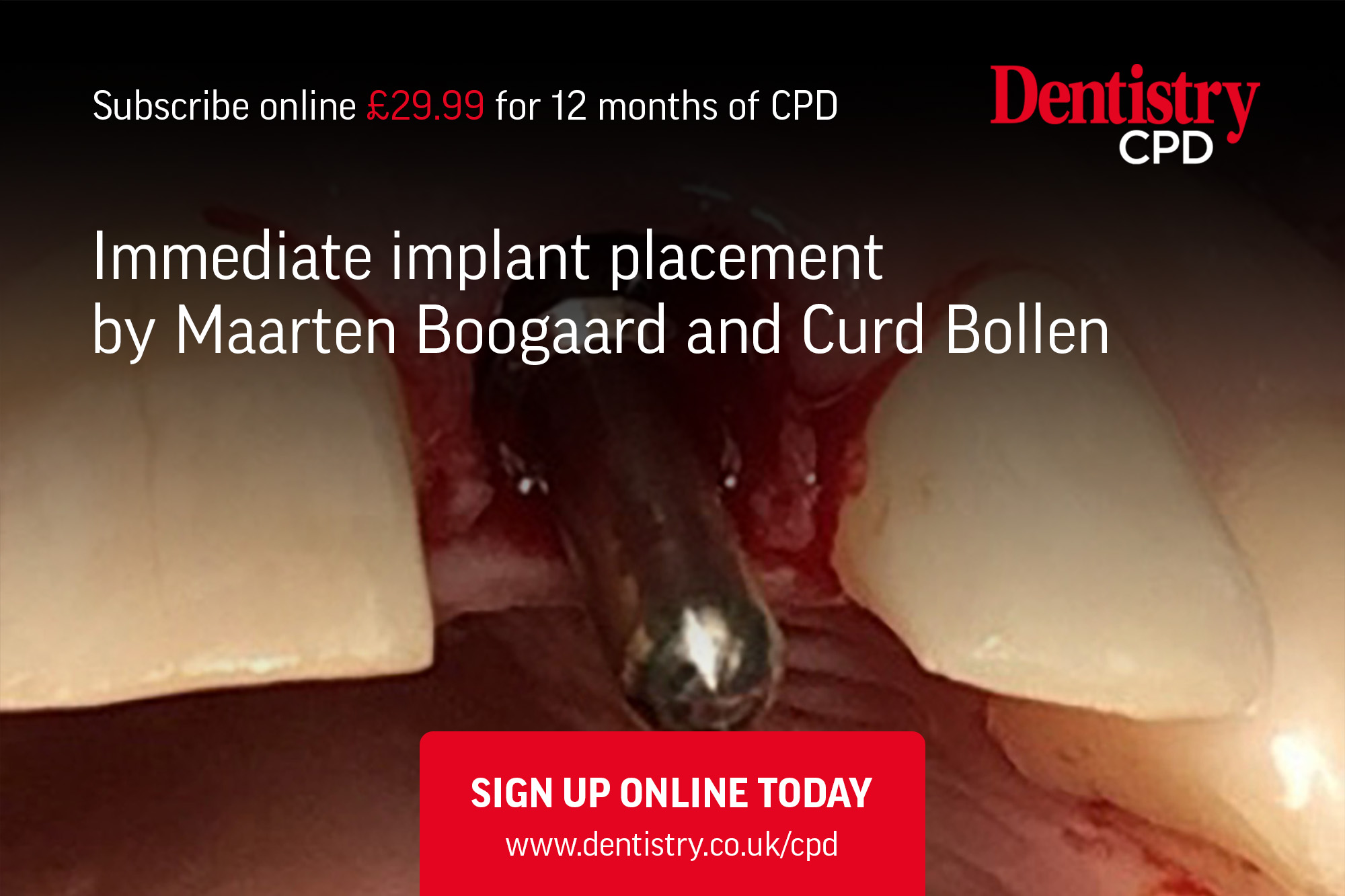 Maarten Boogaard and Curd Bollen present a case series demonstrating immediate implant placement in extraction sockets using a synthetic putty graft.
Maarten Boogaard and Curd Bollen present a case series demonstrating immediate implant placement in extraction sockets using a synthetic putty graft.
Implant placement in extraction post sockets was introduced 40 years ago (Lazarra, 1989). For more than two decades, the clinical protocol for immediate (anterior) implant placement into recent extraction sockets has evolved from a two-stage protocol over a one-stage protocol to a direct loading protocol, often flapless. Sometimes, an immediate provisional restoration is placed at the same clinical session (Chu et al, 2012).
The significant changes in alveolar ridge volume happen during the first 12 months post-extraction. These changes are detected specifically in the horizontal direction.
They are more pronounced buccally then lingually because the buccal bone plate is more suspectable to resorption then the lingual plate, due to its limited thickness (Schropp et al, 2003; Denardi et al, 2019).
A series of CT scans in 250 patients showed that the anterior facial plate thickness ranges from 0.3mm to 1mm. Fifty per cent of the wall thickness is even less than 0.5mm. These findings show that, for many patients, the extraction of an anterior maxillary tooth will likely result in the loss of the entire buccal plate. This is changing the ridge contours profoundly (Januario, Duarte and Barriviera, 2011).
The location of the lost tooth, the width of the remaining buccal bone crest, and the size of the horizontal buccal gap can significantly influence the alteration in the bone crest after a tooth extraction (Evans and Chen, 2008).
Furthermore, implant placement into a fresh extraction socket cannot prevent crestal remodelling. However, filling the small gap between the border of the extraction socket wall and the implant with some mineralised collagen bone substitute provides an additional amount of hard tissue.
This minimal graft will improve the level of marginal bone-to-implant contact (Araujo, Linder and Lindhe, 2011). Immediate loading with a provisional prosthesis is possible afterwards.
The temporary crown will not interfere with the implant osseointegration if the loading forces are correctly oriented. Necessarily, the implant needs to have a satisfactory primary stability (Amato et al, 2020).
A synthetic putty graft can be used to fill this buccal gap. The putty applied in this case series is composed of calcium phosphate silicate. This material is trapped in a carrier. It is a bioactive regenerative material that acts as an osteoconductive scaffold.
It also interacts with the surrounding tissues and imparts an osteostimulatory effect (Lazarra, 1989).
The material is easy to handle and to apply. Moreover, it has a transient haemostatic effect. It has an optimal retention and can adapt easily to the shape of the defect (Profeta and Prucher, 2015).
Studies indicate 85% of the material is resorbed within four to six months. In the meantime, bone regenerating will take place.
This putty has proven to regenerate new bone when applied in socket grafting, grafting of periodontal defects and even in crestal sinus lift procedures (Gonshor et al, 2011; Kotsakis et al, 2014a; Kotsakis et al, 2014b; Boogaard, 2021; Uppal et al, 2011).
To read the rest of this article and gain CPD, simply visit www.dentistry.co.uk/cpd.


